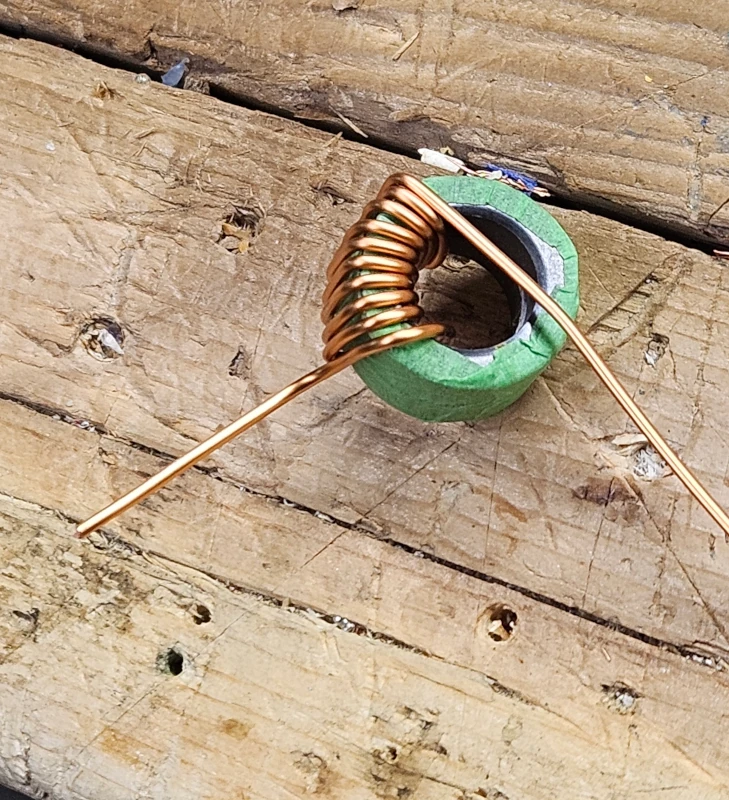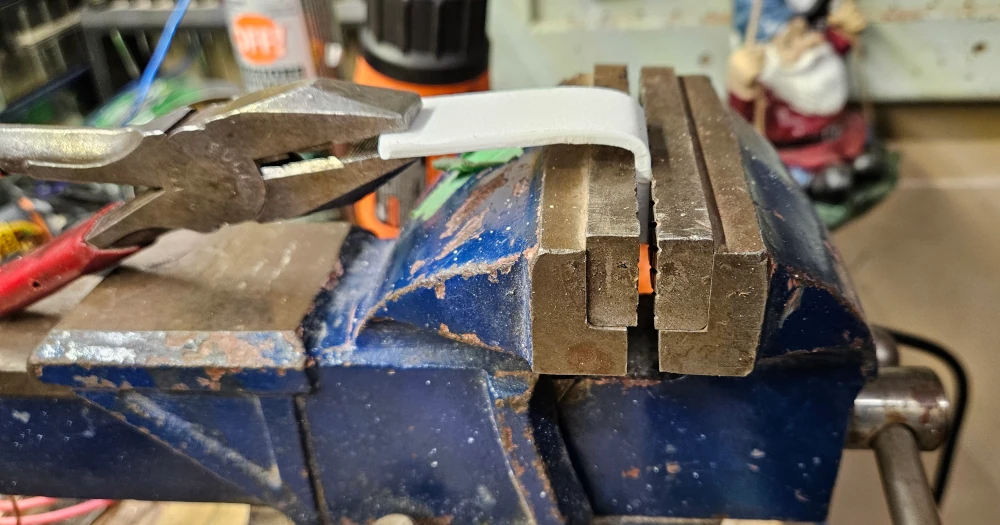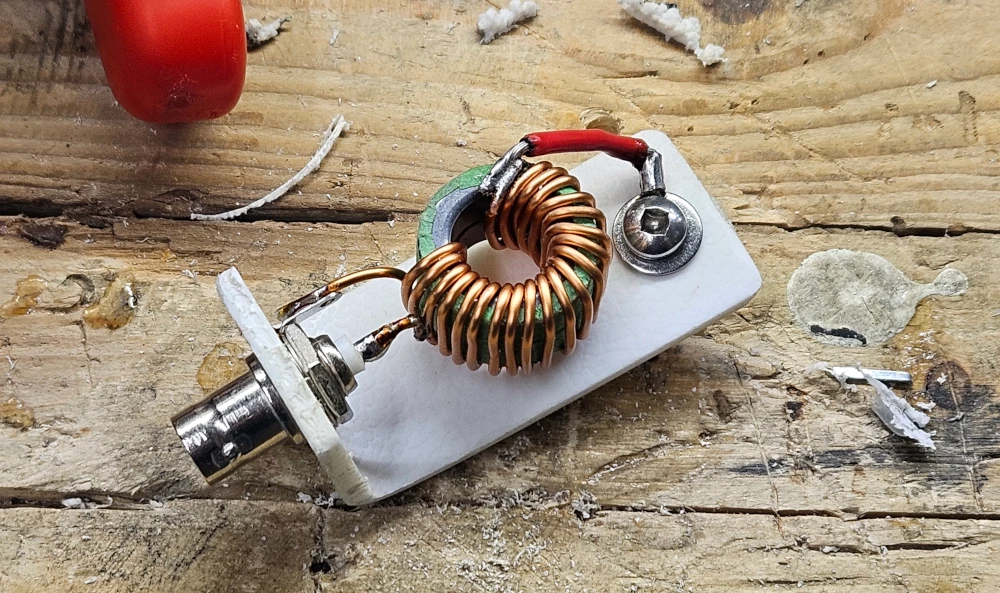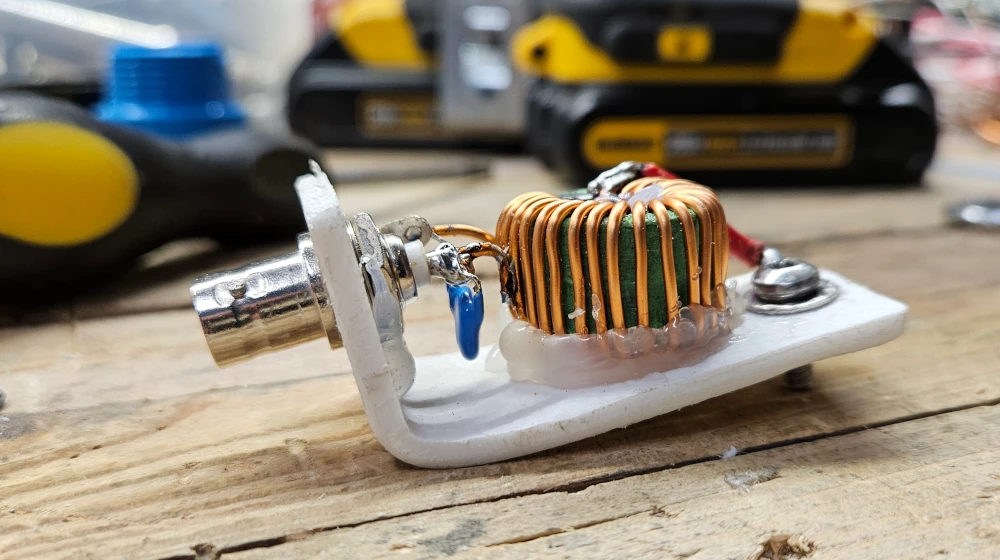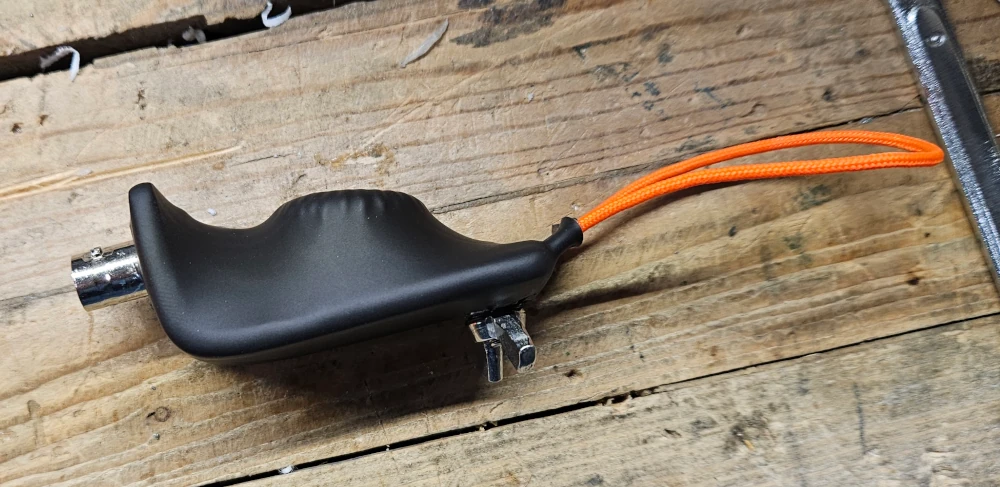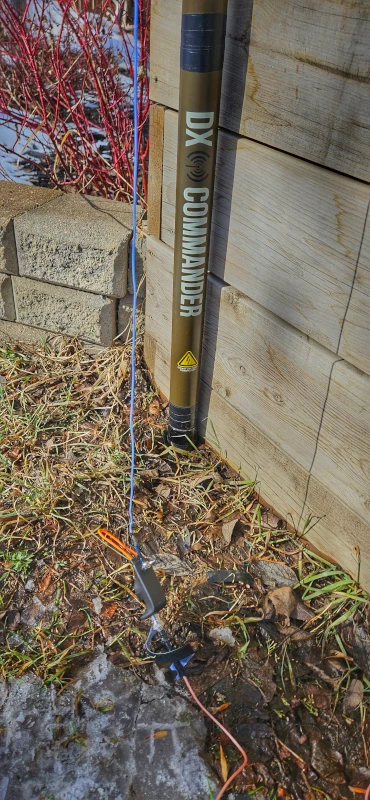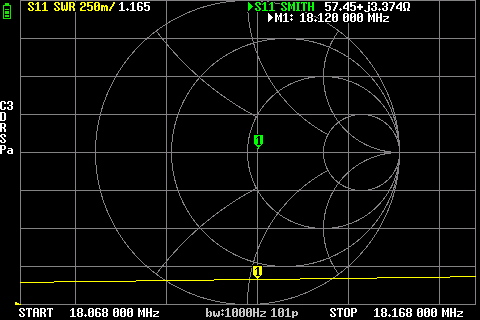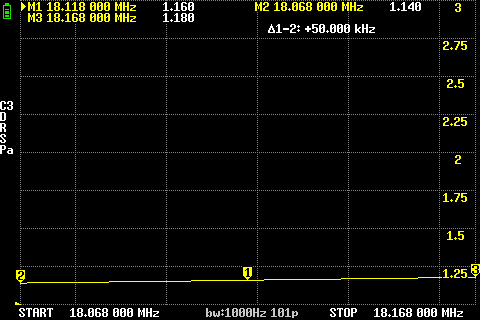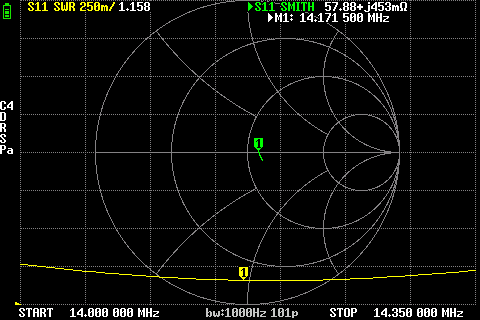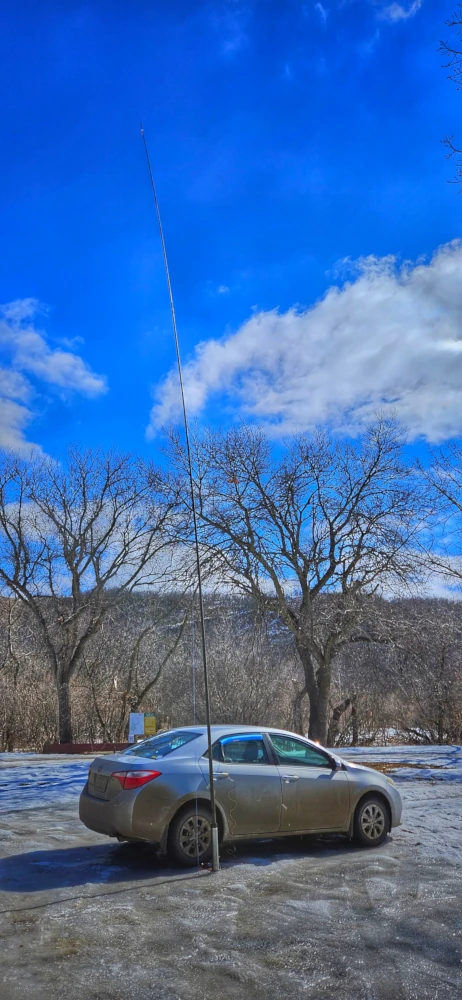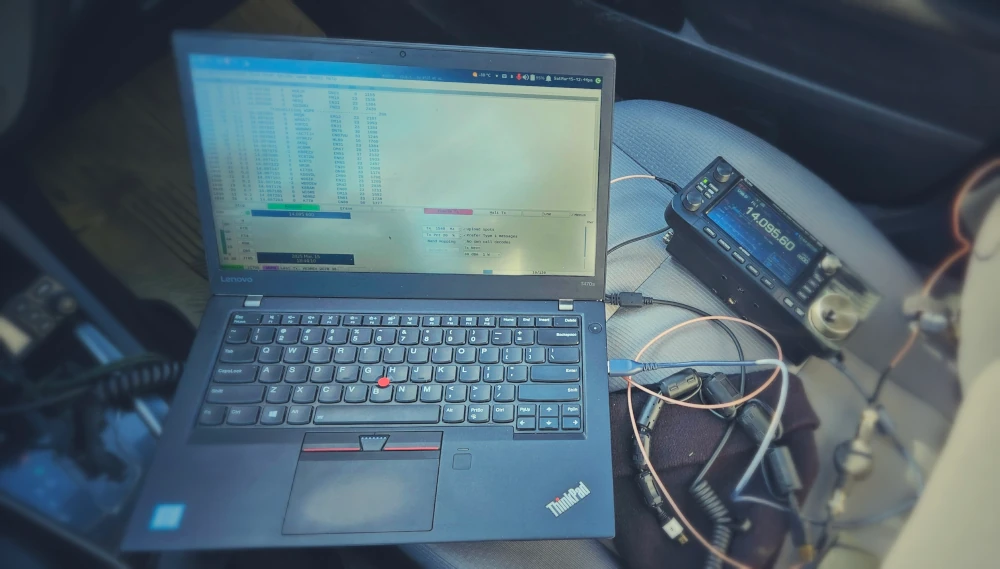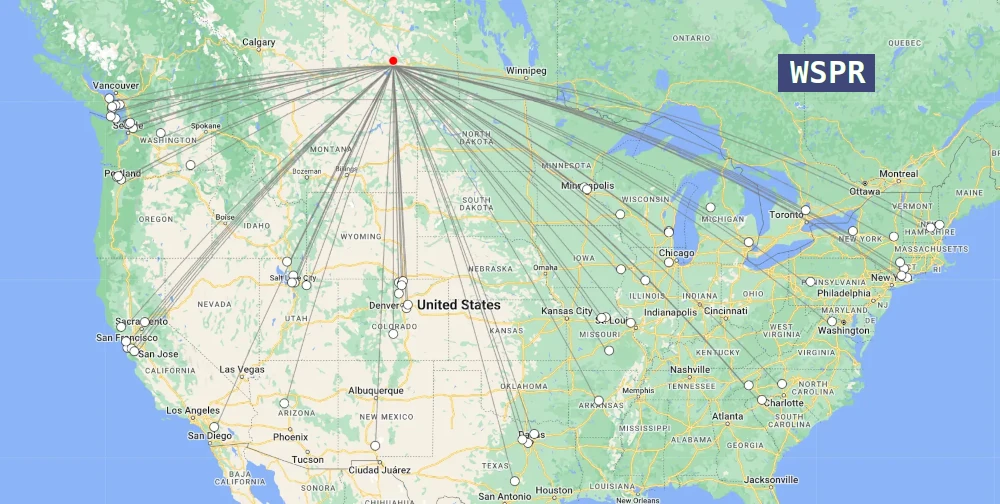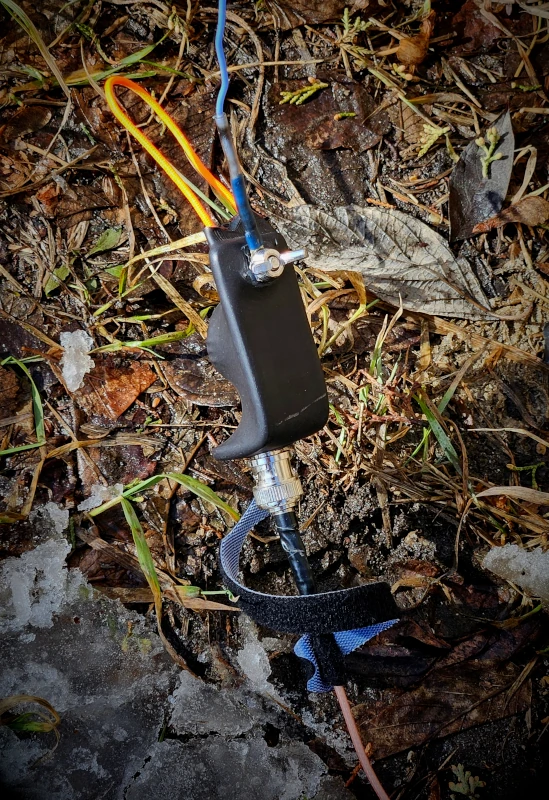EFHW for QRP
I really like QRP operating. In an age where zillions of watts of power is the norm, I find it fun to try and do more with less. It’s ultra frustrating sometimes, particularly when trying to do a Parks On The Air activation. When you’re QRP, QSY is your friend! “Why yes, I’ll QSY for you!”
Concept
The whole point of going QRP is less. Less power, less gear. I wanted a super compact and lightweight setup for my IC-705. 10w max. Beautifully resonant, monoband EFHW wires cut for 20M and also 17M. You can get a 10M harmonic on the 20M. So that’s 3 bands. Plenty. But I didn’t want a bulky EFHW transformer.
Build Notes
Cores
The cores I picked were the Type 43 Size: .827” (21mm) OD. Core: 5943000601 because I had them in stock. I used two of them stacked together. DG1JAN did a proverbial metric tonne of research into mini cores. He discovered that nesting a smaller core inside a larger core (effectively mimicking the Type 43 2643251002 “Fatty” geometry) yields over 90% efficiency, so keep that in mind. A single of the cores I’m using is ~73% efficient. However, two of them stacked bumps this up to ~87% with three primary turns and 21 secondary. Apparently, this winding pattern is more performant for smaller cores as the more common 2:14 ratio is a bit lacking in Inductive Reactance. This isn’t as big a problem with larger cores. There’s a good theory video about this from DL2MAN and then also his part 2 - particularly the conclusions. I went with the tapped autotransformer design that I prefer over the twisted version. I used 16AWG Enameled wire, which is a bit chunky for these smaller cores. But, I had it stock so there you go.
Sled
The backbone of this build is a dollar store cutting board “sled.” I measured it to length, scored the bend, heated it with a heat gun then bent it in the vice. This makes a sturdy base for the cores and the BNC connector. And of course, the antenna mounting machine screw.
BNC
Prioritizing overall compactness, I went with a BNC connector. Also, I will be using RG316 coax for the feedline with this setup so BNC made the most sense - Grok AI says that it’s only -1dB hit using 25’ of RG316. But what’s with the red extension wire?! It totally wasn’t because I measured the wire wrong and it was short. That totally wasn’t the reason. LOL
Capacitor
I snuck in a 100pF capacitor (CC45SL3FD101JYNNA) in shunt position. It’s as snug as a bug in a rug! I then added a bit of hot glue to keep everything in place.
Heat Shrink
I put a loop of 95 Paracord around the glued cores and brought it out the top. And finally, I put some nice shrink wrap around the whole thing to protect the components and give it a look that’s sleeker than Saskatchewan Seal skin! I finished it off with a wingnut for to hold on yonder antenna wire.
Deficiencies
A quick word on why this might not be that great. Because there is no isolation for the coax, the coax might possibly be radiating more than the antenna wire! This, of course, would be bad. I would have to check with an RF Probe to be sure. I don’t have an RF Probe. Ideally, every EFHW transformer should have a 1:1 choke to isolate the coax from radiating and have a dedicated counterpoise wire. But, this optimal design adds bulk to the build.
Performance
How’d this setup do? Ideally I should have built two of these things and actually measured the loss. But I only had the two of these cores so such a test will have to wait for another day.
But as for SWR, as previously mentioned, I cut two half-wave antenna wires from BNTECHGO 22AWG silicone wire. One for 20M and one for 17M. This QRP EFHW is using 25’ of RG316 as the counterpoise wire. But I did use a 1:1 choke at the rig side of the coax to help keep the common mode current out. I tested without this choke and the IC-705 lit up and locked right up on the first transmission. CMC is not your friend. The antenna wires go straight vertical up my DX Commander mast with the transformer on the ground.
Here’s some NanoVNA Sweeps for Smith Chart & SWR:
17M Wire
20M Wire
This is straight outta the NanoVNA without any impedance match/tuner. Not too shabby! Should have pretty descent power transfer. There’s already enough losses with these cores & the RG316 coax.
Field Tests
It really is a quick deploy setup. Connect the wire end to the mast and raise it up. You’re on the air in less than 4 minutes. I used my drive on mast holder for this test.
Here is a bonus winter-time tip for running coax out the window. Pool noodles are your friend!
WSPR Results
Here are the WSPR results, 1 watt for 20 minutes to see how this antenna is getting out. It’s got a nice omni-directional pattern as expected.
I got 185 reports. The range ran from +17 to -28. Average was -14.
Max Distance was 2717km. Min Distance was 1066km. Average Distance was 1691km.
After the WSPR test, I did some 5w FT8 and logged 2 QSOs. I also hunted POTA with 5w and got 1 20M contact, 59 report. And I got 2 contacts on the 10M harmonic with 41 and 51 reports. Not too shabby!
Wrap Up
Tis’ proving to be a banger of a QRP setup! Now to test how low can you go with power and still get it done!
73 de VE5REV


